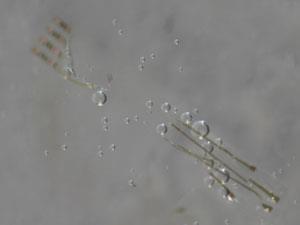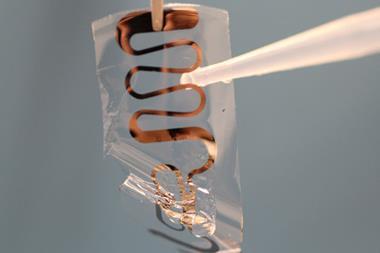Transient electronics with programmable shelf-life could be handy for medics and military

‘This tape will self-destruct in five seconds.’ So ended the agents’ instructions in the long-running TV series Mission: impossible. While the idea of self-destructing tape was pure fantasy then, now researchers in China and the US have produced electronic devices that gradually decompose through reactions with water in the air. The researchers believe the device could have important applications not just in security but in environmental protection and potentially medicine too.
With electronic devices becoming ever more widespread, interest has grown in ‘transient electronics’, which would do their job and then decompose. This could cut electronic waste, and be useful in situations where recovering devices is troublesome. Sensors implanted in the human body, for example, can require further surgery to remove. However, the techniques used to break down transient circuitry usually involve using chemicals encapsulated in the material. This makes it difficult to adjust the lifetime of the circuit. Moreover, many common electronic materials, such as copper, can’t be used because they don’t break down.

Cunjiang Yu of the University of Houston in Texas and colleagues in China deposited materials common in the semiconductor industry, such as copper, magnesium oxide and indium gallium zinc oxide semiconductors, onto a polyanhydride substrate. Gradually, water vapour from the air hydrolysed the polymer’s anhydride groups, causing decomposition of the film. The carboxylic acid produced by the hydrolysis could break down electronic materials too. The researchers fabricated transient resistors, capacitors, transistors and other electronic components. The decomposition time could be varied from days to weeks and potentially even longer by altering the polymer’s anhydride content and the humidity. Yu suggests this could be achieved in real-world devices using packaging.
The researchers now intend to put the technology to use in the field. They are looking at military applications first. ‘Soldiers these days carry so many smart devices,’ says Yu. ‘If a soldier dies in the field we don’t want the electronics they’re carrying to be deciphered by the enemy.’ For medical applications, they need to test the biocompatibility of the materials involved, but Yu says: ‘The acids involved aren’t very strong… My suspicions are that [the system] will be biocompatible.’
John Rogers of Northwestern University, US, is impressed. ‘It introduces the notion that you can use the substrate as the vehicle for triggering physical disintegration and dissolution of the electronics. That’s a new concept in transient electronics, which I believe is emerging as a pretty important technology.’ He suspects that the acidity, as well as the probable rapidity of hydrolysis in the moist environment of the body, may hinder biomedical uses, but he believes military applications are possible. ‘Ultimately, for those systems, the idea of a triggered transience is the holy grail,’ he says. ‘But a system like Cunjiang’s, in which a timer is built into the material dictating how long it will exist, is interesting.’
References
Y Gao et al, Sci. Adv., 2017, DOI: 10.1126/sciadv.1701222↓

















No comments yet